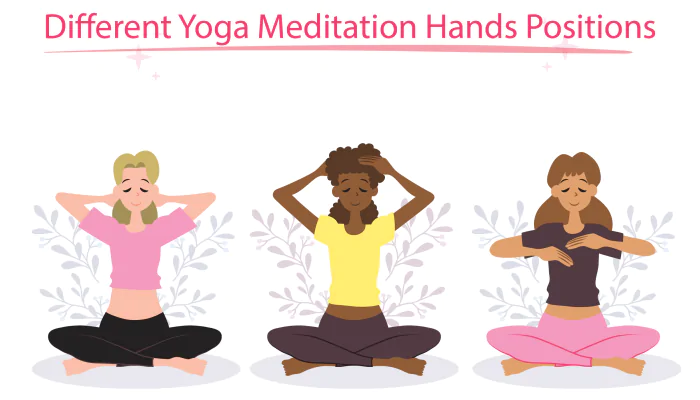Meditation is more than just sitting quietly — it’s a mindful arrangement of your body, breath, and intention. One often-overlooked aspect is how you position your hands. In yoga traditions, these are called mudras, and they are believed to channel energy, calm the mind, and deepen spiritual awareness.
Suppose you’ve been searching for hand positions for meditation, meditation hand positions, or the most effective yoga meditation poses. In that case, this guide will help you understand their benefits and how to practice them with intention.
1. Gyan Mudra (Gesture of Knowledge)
Benefits and Best Use
Gyan Mudra is one of the most recognizable meditation hand positions and is widely practiced in yoga and mindfulness traditions. This mudra is believed to stimulate the root and crown chakras, enhancing memory, creativity, and concentration. It’s especially helpful for students, professionals, and anyone seeking mental clarity during yoga meditation poses. Practicing Gyan Mudra regularly can also help calm overactive thoughts, making it perfect for morning meditations or focused study sessions.
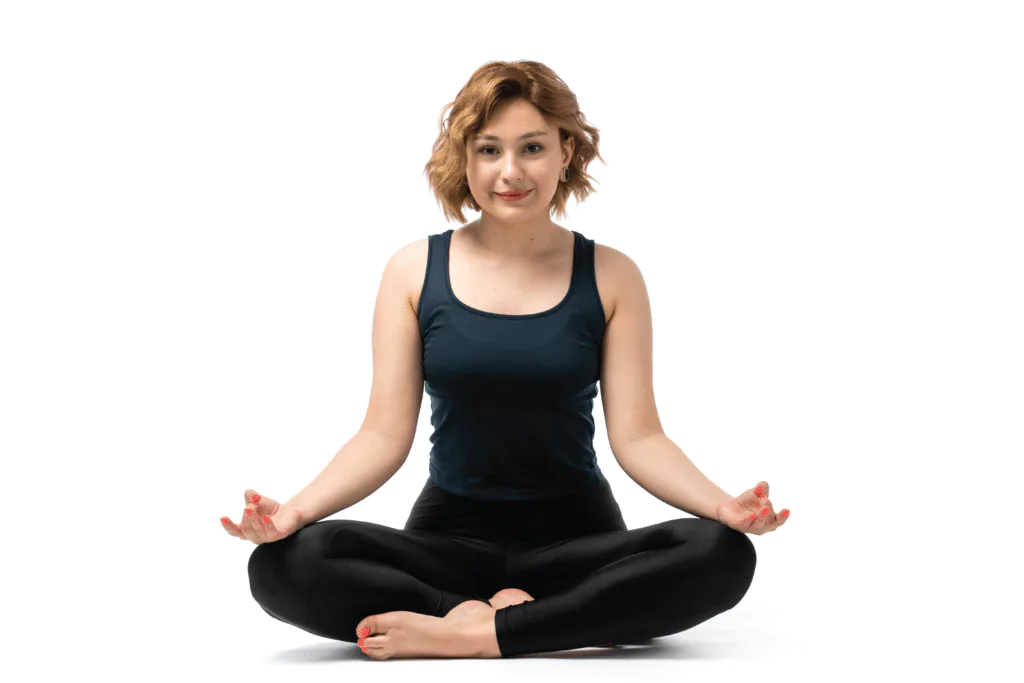
How to Do It ?
Sit in a comfortable meditation yoga pose such as Sukhasana (Easy Pose) or Padmasana (Lotus Pose). Rest your hands on your knees with palms facing upward. Gently touch the tip of your index finger to the tip of your thumb, keeping the other three fingers extended but relaxed. Your touch should be light, not pressing. Focus on your breath, allowing the connection between thumb and index finger to act as an anchor for your awareness.
2. Dhyana Mudra (Gesture of Meditation)
Benefits and Best Use
Dhyana Mudra is the ultimate posture for deep contemplation and is traditionally associated with enlightenment. It helps balance energy in the body, calm the mind, and deepen focus, making it ideal for long, uninterrupted meditation sessions. In yoga meditation poses, this hand position is best suited for grounding practices, mindfulness meditation, and breathwork exercises that involve withdrawing your senses from the external world.
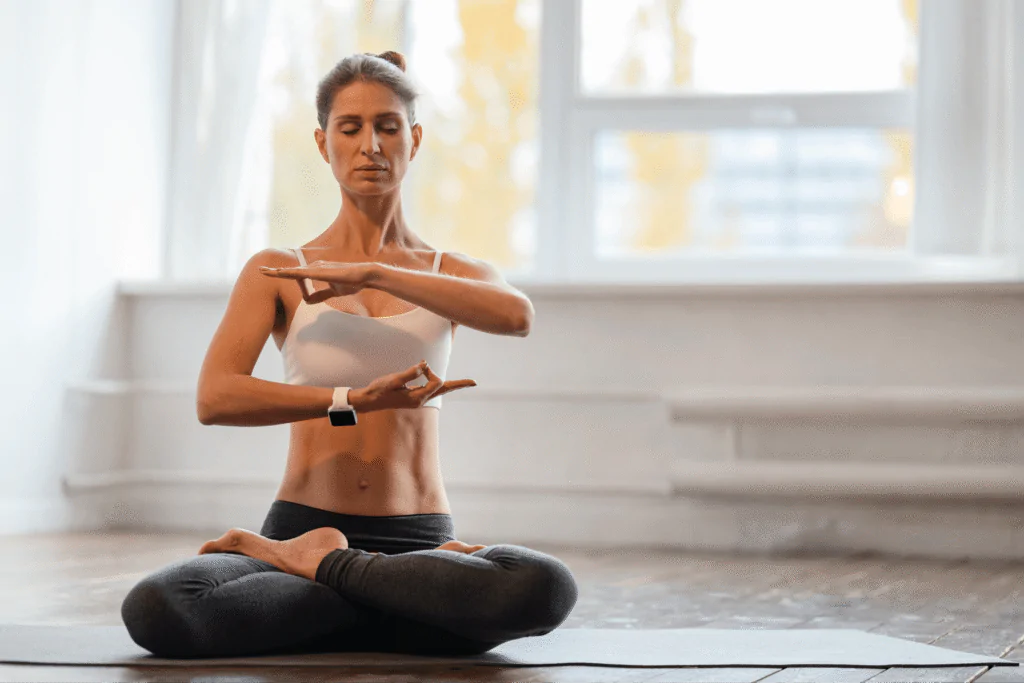
How to Do It ?
Sit in a stable pose such as Padmasana or Vajrasana. Place your right hand gently over your left, both palms facing upward, so that the hands rest comfortably in your lap. Let the tips of your thumbs touch lightly, forming a soft triangle. Keep your shoulders relaxed and spine tall. As you breathe slowly, imagine energy circulating in this triangular space, creating a sense of balance and harmony.
3. Anjali Mudra (Prayer Gesture)
Benefits and Best Use
Anjali Mudra is often seen in yoga classes as a greeting or sign of respect, but its role in meditation is equally powerful. This position promotes gratitude, humility, and emotional connection — both with yourself and others. It’s a perfect choice when starting or ending your meditation, during spiritual prayers, or when practicing yoga meditation poses that focus on heart-opening and compassion.
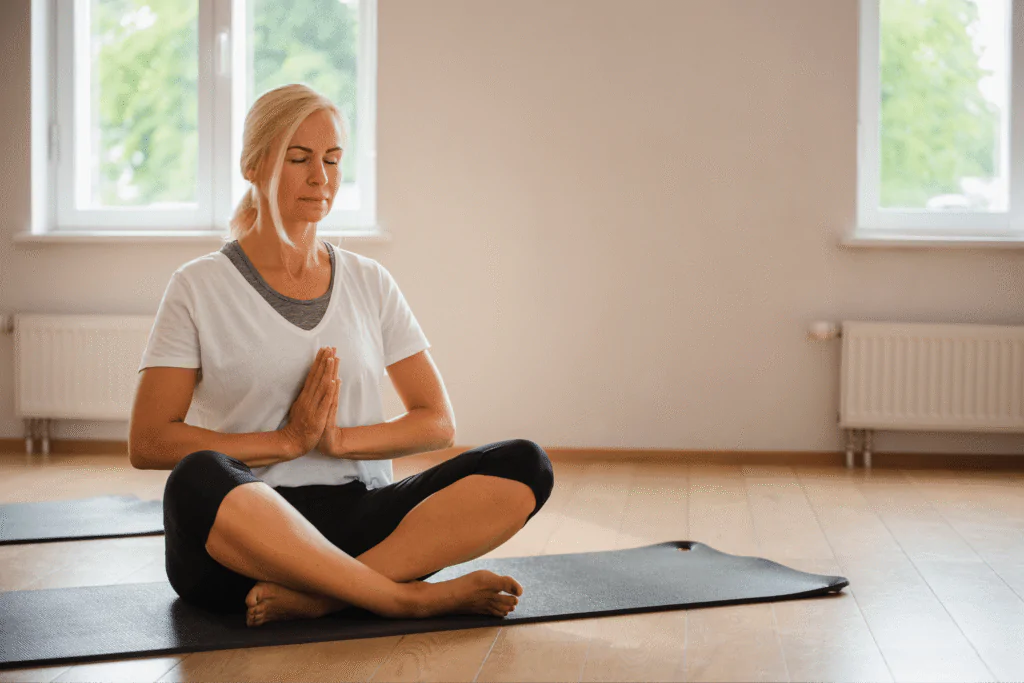
How to Do It ?
Sit or stand tall, drawing your palms together in front of your heart centre with fingers pointing upward. Press your palms gently so that your forearms and elbows are relaxed. Close your eyes and take a few deep breaths, feeling your heartbeat under your thumbs. Use this time to silently express gratitude or set an intention for your meditation.
4. Chin Mudra (Consciousness Gesture)
Benefits and Best Use
Chin Mudra is closely related to Gyan Mudra but is specifically aimed at cultivating inner awareness and connecting with higher consciousness. It is believed to help regulate energy flow, reduce stress, and improve mental clarity. This mudra works especially well during breath-focused meditations or meditation yoga poses intended for stress relief and emotional balance.
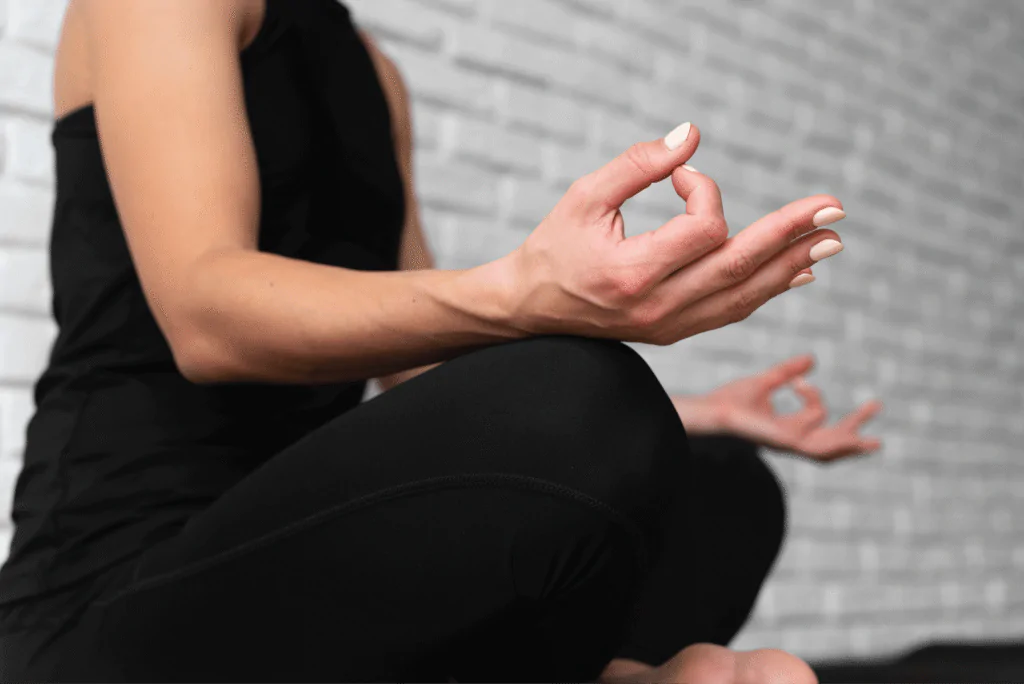
How to Do It
Sit in a comfortable position with a straight spine. Place your hands on your knees, palms facing upward. Touch the tips of your thumbs and index fingers together while keeping the other three fingers extended and relaxed. Unlike Gyan Mudra, the focus here is on turning your attention inward — notice the subtle sensations in your hands, the rhythm of your breath, and the quiet space in your mind.
6. Vajrapradama Mudra (Gesture of Unshakable Trust)
Benefits and Best Use
Vajrapradama Mudra symbolizes self-confidence, trust, and resilience. It’s a powerful choice when you need to reinforce your inner strength, especially before a big challenge or when overcoming self-doubt. In yoga meditation poses, this mudra helps open the chest, improve posture, and strengthen your emotional center, making it ideal for heart-centered meditations and healing practices.
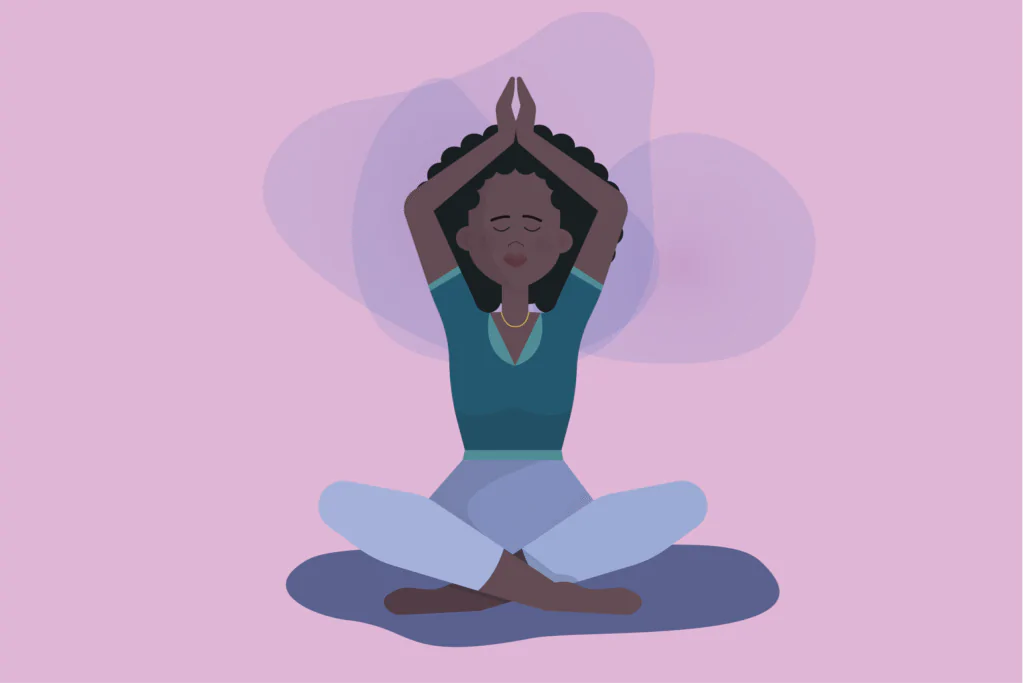
How to Do It
Sit in Sukhasana or Vajrasana with your spine straight. Interlace your fingers loosely and place your hands over your chest so that your thumbs point upward. Relax your elbows downward, keeping your shoulders soft. Breathe deeply into your chest, feeling each inhale expand your heart space and each exhale release tension. Stay here for several breaths, focusing on feelings of trust and courage.
Pairing Hand Positions with Yoga Meditation Poses
Yoga Pose Recommended Hand Position Why It Works
| Yoga Pose | Recommended Hand Position | Why It Works |
| Sukhasana (Easy Pose) | Dhyana Mudra | Encourages stillness and calm for longer meditations. |
| Padmasana (Lotus Pose) | Gyan Mudra | Opens energy channels and sharpens concentration. |
| Vajrasana (Thunderbolt Pose) | Anjali Mudra | Cultivates gratitude and inner balance. |
| Shavasana (Corpse Pose) | Chin Mudra | Promotes relaxation and mindful breathing. |
Conclusion
Meditation is a deeply personal journey, and your hand position can significantly shape the way you experience it. Whether you choose the focus-enhancing Gyan Mudra, the grounding Dhyana Mudra, or the confidence-boosting Vajrapradama Mudra, each gesture carries a unique energy that supports different intentions. Pairing the right meditation hand positions with complementary yoga meditation poses allows you to create a practice that’s both physically comfortable and energetically powerful.
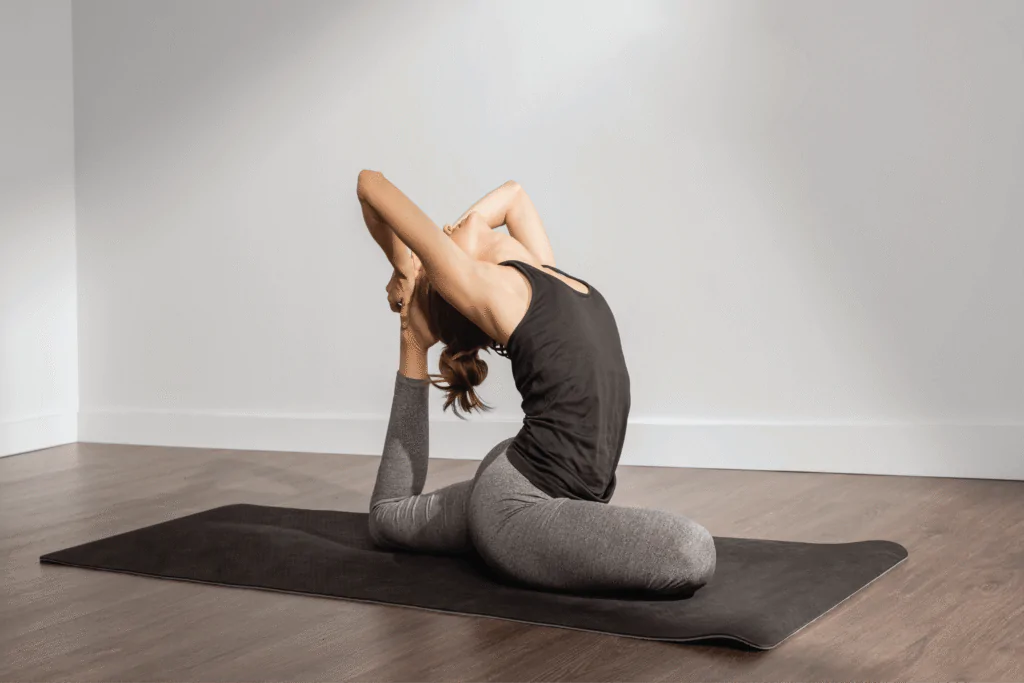
What matters most is consistency and awareness — even a few minutes each day can help you reconnect with yourself, calm your thoughts, and improve your overall well-being. Don’t be afraid to explore, experiment, and adjust until you find the combination that feels right for your body and mind.
Your turn
Which meditation hand position or yoga meditation pose did you try for the very first time? How did it feel, and what difference did you notice in your practice? Share your experience in the comments — your story might be the motivation someone else needs to begin their journey.

